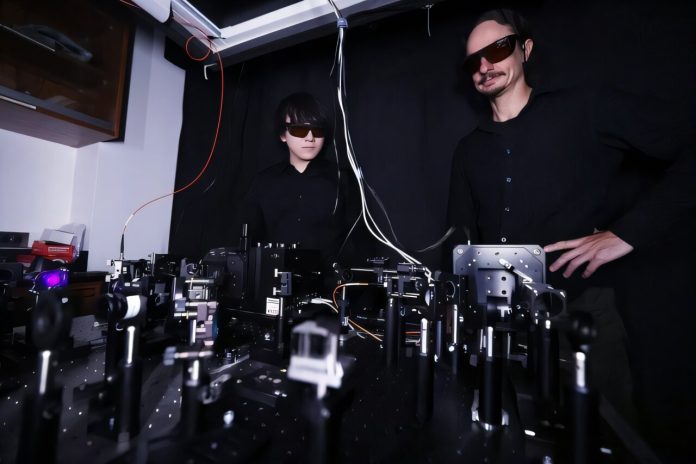
Engineers at the University of Michigan have created a breakthrough device that can control the flow of excitons—tiny bundles of energy that could one day replace electricity in circuits.
This is the first time researchers have built a switch that directs excitons at room temperature, marking a big step toward a new kind of computing.
Excitons are not particles of matter like electrons.
Instead, they are created when light or another energy source kicks an electron into an excited state, leaving behind a “hole.” The electron and the hole stick together and move as a pair.
Because they carry no electric charge, excitons can travel without losing energy the way electrons do. That makes them a promising candidate for faster, cooler, and more energy-efficient technologies.
“Right now, we’re seeing the limits of electronics as AI and data centers use enormous amounts of energy and generate heat like crazy,” said Mack Kira, one of the study’s senior authors. “Excitons could carry information without those losses.”
Excitons already play a role in everyday life. They are at work in the organic LEDs that light up smartphone screens, in solar cells that convert sunlight to electricity, and even in plants, which use excitons to move energy during photosynthesis.
But until now, scientists have struggled to guide excitons in a controlled way.
Unlike electrons, which are easy to steer with positive and negative charges, excitons are neutral, making them hard to direct.
To solve this, the Michigan team designed a special “ridge” structure—like a tiny wire—that guides excitons along a path.
They also placed electrodes on either side of the ridge. When voltage is applied, it creates a barrier that blocks the excitons, stopping their flow. When the voltage is removed, the excitons move again.
This effectively turns the exciton flow on and off, like a transistor for light-based particles. The device demonstrated a strong on-off ratio, large enough for advanced applications.
Another clever feature is that the device uses light not only to create excitons but also to push them forward.
This makes it an “optoexcitonic” switch, combining the power of light with the movement of excitons. In tests, the switch transported excitons in one direction across a distance of four micrometers in less than half a nanosecond—all at room temperature.
The researchers are now working on connecting many of these switches together to build exciton-based circuits.
While such systems could one day replace electronic chips, the first applications will likely be in improving communication between photonics and electronics, speeding up data transfer for supercomputers, data centers, AI, and even smartphones.
With this patent-pending technology, a future where computing runs on light instead of electricity is one step closer.



